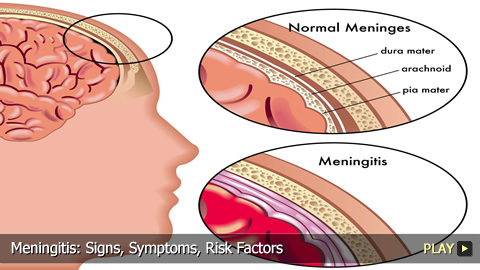Top 5 Eye-Opening Facts on Suicide
There are a lot of misconceptions about this serious topic. Welcome to MsMojo and today we're counting down the Top 5 Eye-Opening Facts on Suicide.
For this list, we're looking at the most salient and interesting facts about this issue.
#5: Depression is a Large Factor
It may seem somewhat obvious, but it merits mentioning that clinical depression plays a significant role in a high percentage of suicides and suicide attempts. Approximately two thirds of people who end their own lives were considered to be depressed at the time they made the decision. However, a diagnosis of depression does not necessarily mean they were receiving proper treatment. While pharmaceutical interventions can have a positive effect on those who are contemplating suicide, side effects of some of these drugs can also increase the instance of suicidal thoughts.
#4: It Affects Men More Than Women
While mental illness affects every demographic of our population, suicide is an issue that affects men disproportionately. In fact, 79% of all suicides that take place are by men. Interestingly though, women are actually more likely have psychological problems like anxiety and depression, and are also more likely to harbour suicidal thoughts than men are. For members of the LGBTQ community, suicide rates are higher than the general population, especially for teens. Youth suicide prevention is becoming a bigger issue in the popular consciousness and there are many steps one can take to help those in need.
#3: Attempted Suicide is Even More Common
If you think the numbers of suicides are high, you'd be shocked to find out that the number of suicide attempts resulting in death is dwarfed by the number of failed attempts that take place every year. In the US, it is estimated that there is one completed suicide for every 25 attempts and that there are more than 300,000 suicide attempt survivors every year. Of course, these numbers can't possibly show a complete picture because many suicide attempts are never recorded.
#2: Social Support Matters
If someone close to you is expressing suicidal thoughts, it's easy to feel helpless and ineffectual. What's important to remember though, is that if a friend or family member is reaching out to you for support, simply listening to them and offering your love and time matters. People who have strong support systems are less likely to attempt suicide, even if they are suffering from depression. There are many resources out there to help you learn more about this disease so you can be prepared with tools for when someone you love needs them.
#1: Suicide Rates Are Not Rising Significantly
Because suicide has been more present in the news and media in recent years, it can be easy to assume that the number of suicides has been gradually climbing. In fact though, rates of suicide have remained relatively constant for decades, with minimal changes taking place on a year to year basis. According to the National Center for Health Statistics, for the span between 1999 and 2014, it was reported that there was a 24% increase in suicides in the U.S; this only means a jump from 10.5 suicides per 100,000 people to 13. For certain demographics, the rates are rising more rapidly.
read more...
There are a lot of misconceptions about this serious topic. Welcome to MsMojo and today we're counting down the Top 5 Eye-Opening Facts on Suicide.
For this list, we're looking at the most salient and interesting facts about this issue.
#5: Depression is a Large Factor
It may seem somewhat obvious, but it merits mentioning that clinical depression plays a significant role in a high percentage of suicides and suicide attempts. Approximately two thirds of people who end their own lives were considered to be depressed at the time they made the decision. However, a diagnosis of depression does not necessarily mean they were receiving proper treatment. While pharmaceutical interventions can have a positive effect on those who are contemplating suicide, side effects of some of these drugs can also increase the instance of suicidal thoughts.
#4: It Affects Men More Than Women
While mental illness affects every demographic of our population, suicide is an issue that affects men disproportionately. In fact, 79% of all suicides that take place are by men. Interestingly though, women are actually more likely have psychological problems like anxiety and depression, and are also more likely to harbour suicidal thoughts than men are. For members of the LGBTQ community, suicide rates are higher than the general population, especially for teens. Youth suicide prevention is becoming a bigger issue in the popular consciousness and there are many steps one can take to help those in need.
#3: Attempted Suicide is Even More Common
If you think the numbers of suicides are high, you'd be shocked to find out that the number of suicide attempts resulting in death is dwarfed by the number of failed attempts that take place every year. In the US, it is estimated that there is one completed suicide for every 25 attempts and that there are more than 300,000 suicide attempt survivors every year. Of course, these numbers can't possibly show a complete picture because many suicide attempts are never recorded.
#2: Social Support Matters
If someone close to you is expressing suicidal thoughts, it's easy to feel helpless and ineffectual. What's important to remember though, is that if a friend or family member is reaching out to you for support, simply listening to them and offering your love and time matters. People who have strong support systems are less likely to attempt suicide, even if they are suffering from depression. There are many resources out there to help you learn more about this disease so you can be prepared with tools for when someone you love needs them.
#1: Suicide Rates Are Not Rising Significantly
Because suicide has been more present in the news and media in recent years, it can be easy to assume that the number of suicides has been gradually climbing. In fact though, rates of suicide have remained relatively constant for decades, with minimal changes taking place on a year to year basis. According to the National Center for Health Statistics, for the span between 1999 and 2014, it was reported that there was a 24% increase in suicides in the U.S; this only means a jump from 10.5 suicides per 100,000 people to 13. For certain demographics, the rates are rising more rapidly.
read more...












